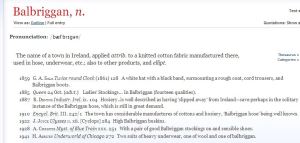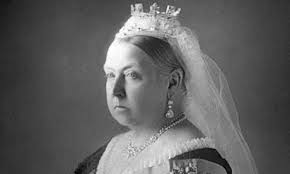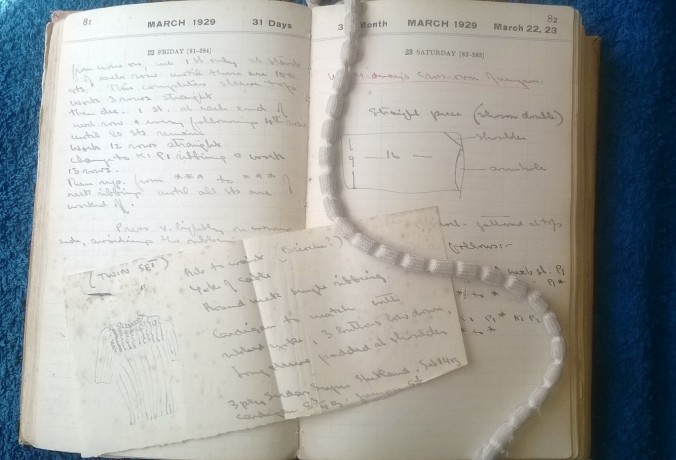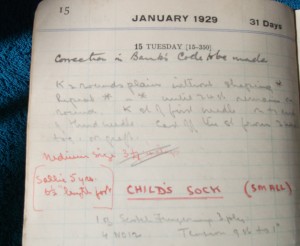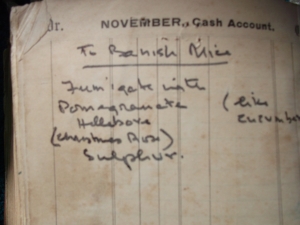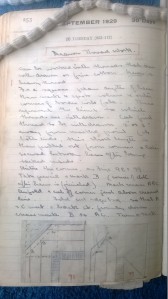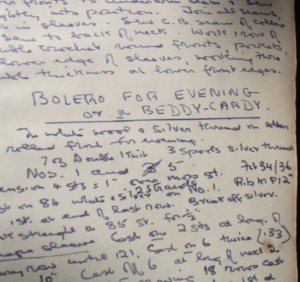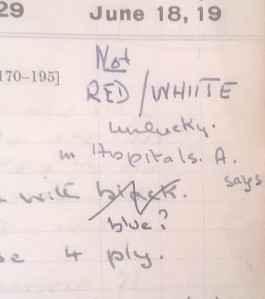It’s heritage week and so it seems fitting to write and knit something heritage related.
I come from a little town you’ve probably never heard of. Unless you’re really interested in socks. Then you’ve probably heard of it.
Once upon a time Balbriggan was famous for its socks. And stockings. And spiffy underclothes. But mostly socks. It’s basically all we are famous for. We even made it to the dictionary. And into Agatha Christie’s vocabulary.
Though the word ‘Balbriggan’ has fallen out of favour and when you type it into certain search engines, a rather unfortunate suggestion is made:
Once upon a time balbriggans were where it was at. There were even ersatz impostor balbriggans like these:
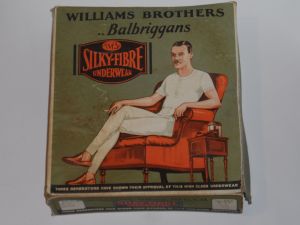
Here the word ‘balbriggans’ clearly means silky onesie worn by mustachioed cads the likes of which your mother warned you about…
Anyway, the socks. The town made lots of them. We even made them for Queen Victoria and the Czarina of Russia, though to be honest, we mostly remember that we made them for Queen Victoria. Apparently she liked them a lot. I don’t know if it’s true but as kids we were told that Balbriggan socks were the only ones Queen Victoria would wear. She was a sock snob.
I have this image of her – stout, miserable, twice as formidable as Flora Klickmann, glaring out the palace windows at the fog[1] waiting anxiously for the next box of balbriggans to arrive (in my head she only wears socks once and then gives them to the maids).
I’m not all that surprised that she liked them. The Balbriggan Heel is lovely. Karl, who is also a sock snob, claims that the Balbriggan Heel is more ‘secure’ than a French Heel or a Round Heel and now asks, nay insists, on the Balbriggan Heel every time.
Maybe it’s just a bit of nostalgia, or the fact that it’s a very easy heel pattern to remember (and it doesn’t matter how many stitches you start with) or even that I really quite enjoy doing Kitchener stitch but I like the Balbriggan Heel too. I use it pretty much all the time now. I learned how here.
It’s kind of hard to see the effect of the heel in the dark yarn so I included some pictures of a sock I made ages ago. Apologies for the quality of the pictures – it’s surprisingly hard to take photos of your own feet.
For heritage week I knew I wanted to share a pattern for Balbriggan socks but I also wanted to combine the iconic Balbriggan Heel with something else that spoke of my hometown and its traditions.
Fish.
Or in any case fishing.
While the town has a square – well sort of a long diamond-shaped bit of hill[2] – the heart of the town is really the harbour – the BBC certainly thought so when they sent poor Michael Portillo there a couple of years ago.
Poor Mr Portillo. He has a little guidebook and everything. The expression on his face when the young fella starts going on about Queen Victoria’s underthings is priceless.[3] And didn’t he do well to round up some nice old fishermen for a chat? Actually, he didn’t. Turns out some of the ‘old salts’ they wanted to interview didn’t look old enough so they swapped one of the not-so-ancient marniners out for one of the local historians who’d happened to stop by the filming. Being an innocent bystander is a great north county hobby – we’re world experts at loitering in the vicinity of interesting conversations and events. And magically dispersing when things start to look dicey. While it looks like a cosy chat on the quayside, I’m willing to put any money that just out of shot were ravening hoards of local nosies, swarms of grubby kids dying to be on “d’ telly” and a large and potentially murderous colony of grey seals.[4]
So, I give you the Balbriggan Harbour Socks. I’ve been thinking of these as sort of ‘young salt’ socks – traditional in their pattern and construction but not obviously oldy-worldy.
The pattern has two sizes – for women’s (approx. size 5) and men’s socks (approx. size 8-9) – there’s a full pattern with both sizes here with pictures and everything and then two ‘condensed’ patterns with the bare minimum of instructions and no pictures that can be printed on a single page. I mostly knit socks on the go so I find condensed instructions quite useful like that…
Balbriggan Harbour Socks – Size One – Condensed Instructions
Balbriggan Harbour Socks – Size Two -condensed instructions
You can find out more about the history of Balbriggan here and here and, if you’re really enthused about socks, you can even plan a holiday here . Really.
[1] Because London is always full of fog. This is a fact.
[2] We have a lot of hills. An awful lot of hills. I don’t think I saw a straight line until I was twelve.
[3] If you are operating under the delusion that the English spoken in Ireland is the same as the English spoken in England, I invite you to watch this video closely. Note especially the various ways the word “queen” is pronounced.
[4] There are a lot of seals in Balbriggan. The town’s been campaigning to get a seal sanctuary for years but really I think it’s just a way of admitting that the seals basically own the place.

